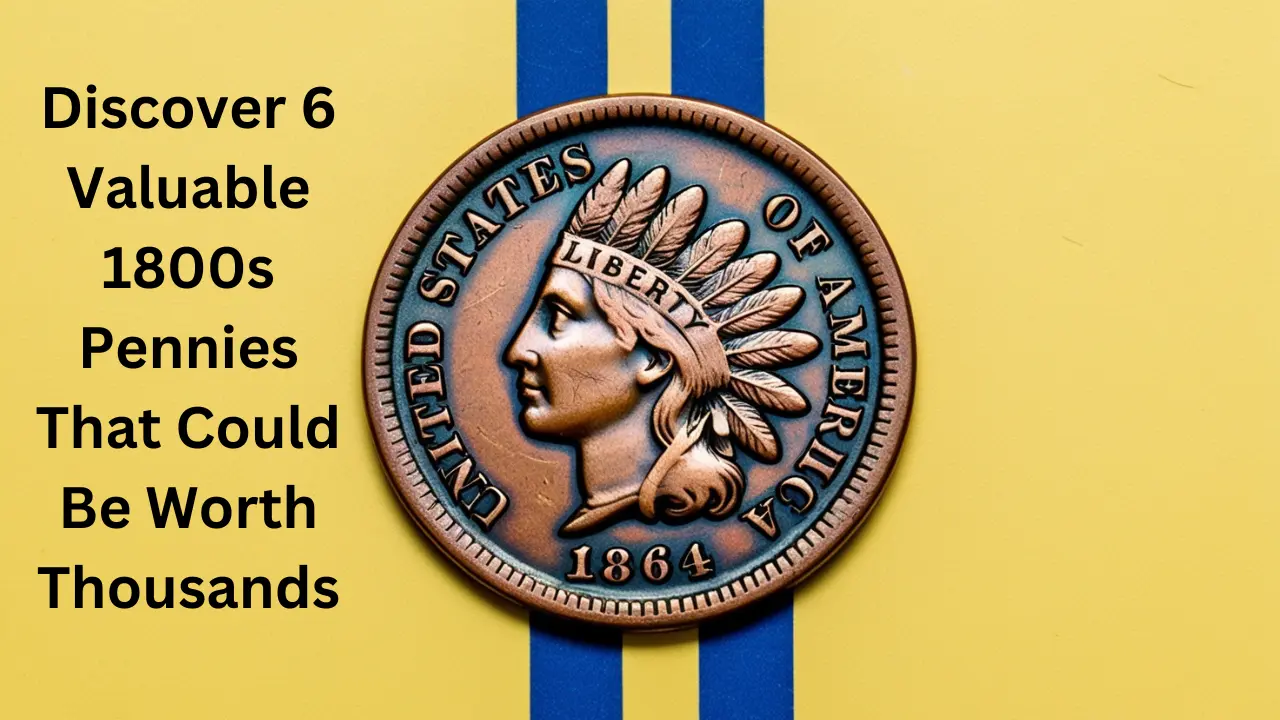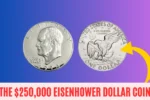The 19th century produced several U.S. pennies that have become highly coveted by collectors because of their rarity and historical significance. If you’re fortunate enough to own one of these rare coins, you might be sitting on a small fortune. Here are six pennies from the 1800s that collectors actively search for:
1. 1856 Flying Eagle Cent
The 1856 Flying Eagle cent is particularly valuable because it was minted as a pattern coin, designed to introduce the new small cent design. Only about 634 of these coins were produced, making it extremely rare. In average condition, it can fetch approximately $8,000, but coins in mint state have been known to reach as high as $25,000.
2. 1864 Indian Head Penny with “L” on Ribbon
A unique variety of the 1864 Indian Head penny, this coin features an “L” on the ribbon, indicating the designer, James B. Longacre. In good condition, these pennies are valued at around $68. However, uncirculated examples can sell for as much as $519. Proof versions, especially in excellent condition, can command prices over $34,000.
3. 1872 Indian Head Penny
The 1872 Indian Head penny is another highly sought-after coin from the 1800s. While it might only be worth around $80 in average condition, coins in mint state can easily be valued up to $1,350. Its relative scarcity and historical importance make it desirable among collectors.
4. 1877 Indian Head Penny
Among the most coveted of the Indian Head pennies, the 1877 edition stands out due to its extremely low mintage. While a coin in average condition might be worth around $725, those in mint state can see significantly higher prices, making it one of the most valuable pennies in this series.
5. 1888/7 Indian Head Penny (Overdate)
This overdate variety, where the year 1888 was stamped over the 1887 date, is incredibly rare. In fact, a well-preserved 1888/7 Indian Head penny sold for a staggering $72,000 at a Heritage Auction in 2019. Such a high price demonstrates the coin’s immense value and desirability among collectors.
6. 1894 Indian Head Penny with “Red” Designation
The 1894 Indian Head penny stands out for its “Red” designation, a term used for coins that have retained their original copper color. As time passes, oxidation causes pennies to lose their bright red hue, so a well-preserved coin in this condition is highly prized. Similar examples, like a 1909 “Red” Lincoln penny, have been known to sell for over $20,000.
| Coin Type | Year | Distinct Feature | Approximate Value (Good Condition) | Approximate Value (Mint State) |
|---|---|---|---|---|
| Flying Eagle Cent | 1856 | Limited mintage | $8,000 | $25,000 |
| Indian Head Penny | 1864 | “L” on Ribbon | $68 | $519 |
| Indian Head Penny | 1872 | Low mintage | $80 | $1,350 |
| Indian Head Penny | 1877 | Low mintage | $725 | Higher values |
| Indian Head Penny (Overdate) | 1888/7 | 1888 over 1887 | Significant auction values | $72,000 (auction) |
| Indian Head Penny | 1894 | “Red” designation | High auction values | Over $20,000 (similar examples) |
These rare 1800s pennies are incredibly valuable, and their worth can fluctuate based on factors like their condition, rarity, and market demand. If you own one of these coins, it’s a good idea to have it professionally appraised to determine its true value.
Frequently Asked Questions
What makes the 1856 Flying Eagle cent so valuable?
The 1856 Flying Eagle cent is rare because it was minted in limited quantities as a pattern coin. Its purpose was to showcase the new small cent design, making it one of the most sought-after pennies in U.S. history.
How can I identify the 1864 Indian Head penny with the “L” on the ribbon?
The “L” is located on the ribbon behind the Indian Head’s neck, just next to the bottom feather. This small but significant detail differentiates this version of the 1864 Indian Head penny from others.
Why is the 1877 Indian Head penny so highly valued?
The 1877 Indian Head penny had a low mintage, which makes it one of the rarest and most desirable coins in the series. Its scarcity, coupled with high demand, makes it a prized possession for collectors.



